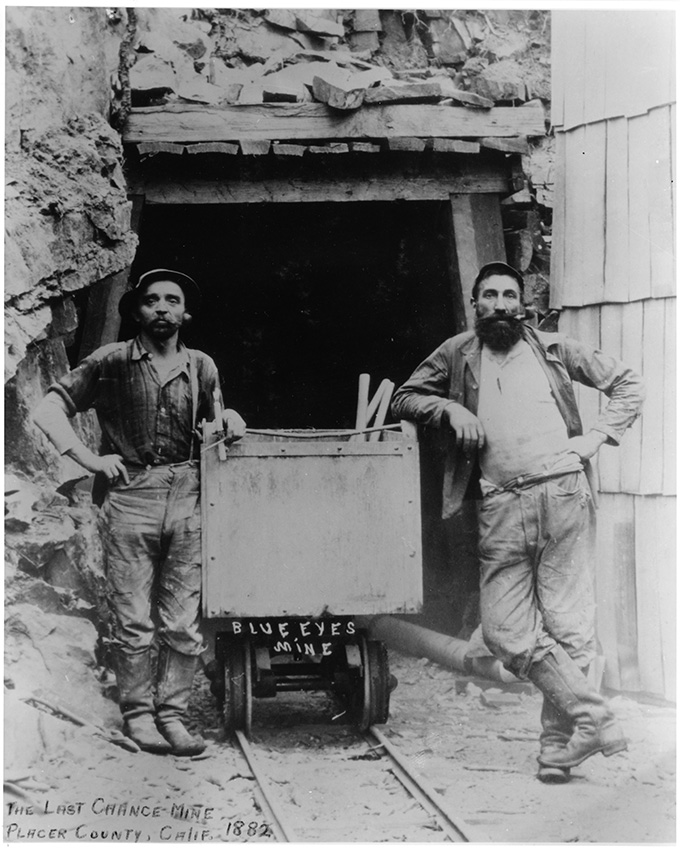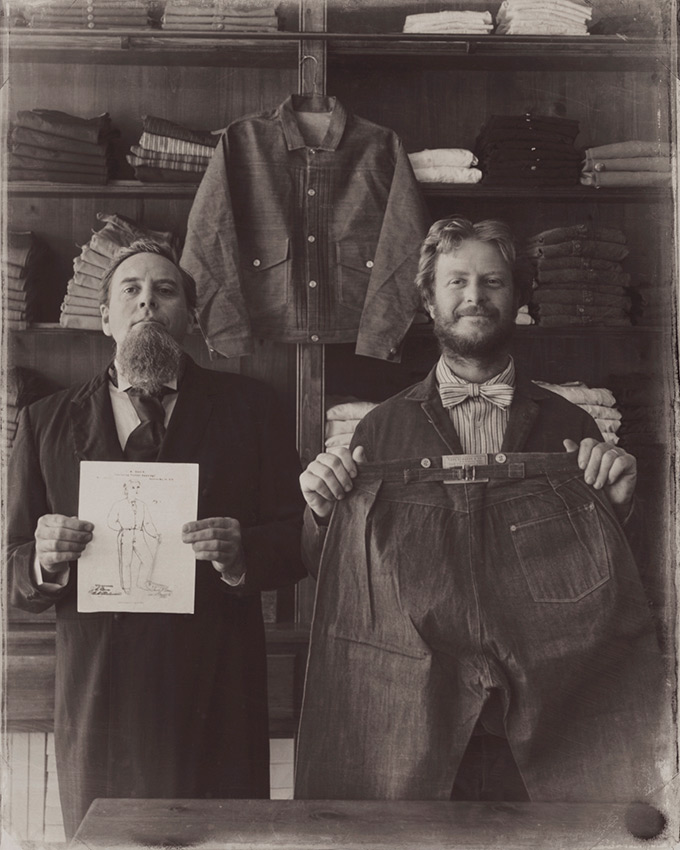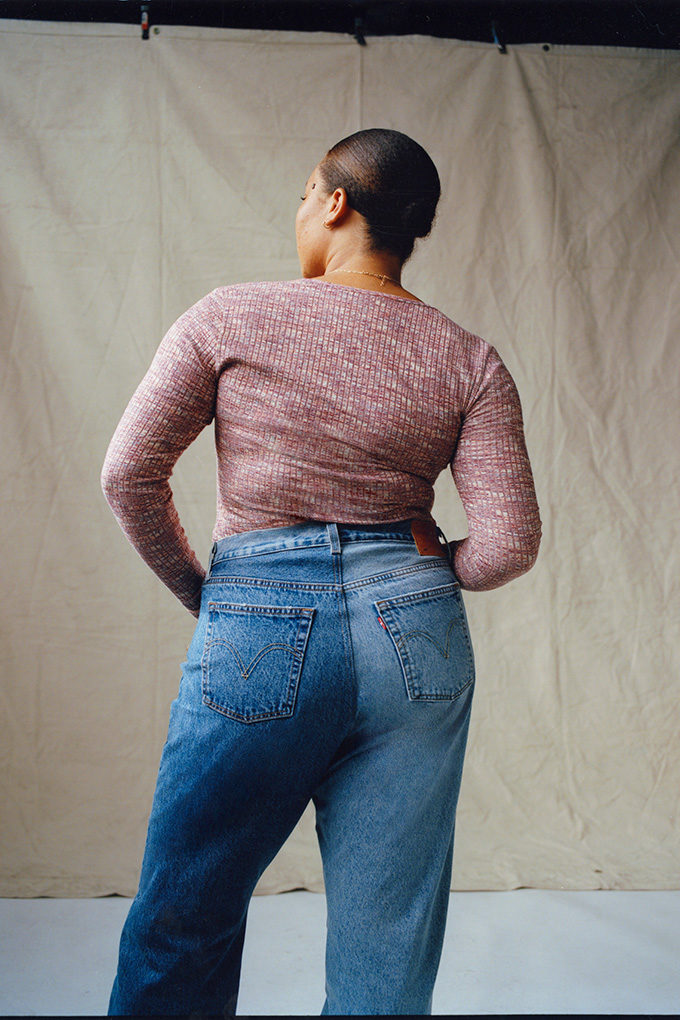There are very few styles of clothing in the world that can be said to be truly ubiquitous, and fewer yet with a clear originator. Levi’s® is one company with such bragging rights: the San Francisco brand’s signature 501® denim jeans are the granddaddy of blue jeans today. The brand is celebrating the 150th anniversary of 501® this year, marking a century and a half since the brand received its patent for the design and manufacture of denim pants with copper-riveted pockets.

A quick introduction for those unfamiliar. When the brand’s founders Levi Strauss and Jacob W. Davis first created the riveted jeans, the intent was to make the pants sturdier. Indeed, denim jeans—originally called waist overalls—used to be the preserve of labourers. Miners and farmers, for example, who needed rugged clothes for the work they did. The designs would eventually evolve and jeans would become the fashion pieces they are today, but those are its humble origins.
Some of the people most familiar with the subject might be brand historian Tracey Panek and global design director of Levi® collections, Paul O’Neill (which includes the Levi’s® Vintage Clothing, Skate and Made in Japan lines), Paul O’Neill. As brand historian, Panek oversees a growing archive—a veritable trove of denim that tells a bigger, broader story about history and culture than pants might suggest. O’Neill, meanwhile, started with the brand at Levi’s® Vintage Clothing, where the modus operandi was the faithful recreation of older Levi’s® designs. Both, as you can imagine, are well-versed in the 501® 150 years. Here, they let us in on the secrets, influences and timelessness of the world’s most foremost blue jean.

Let’s start with you, Paul. As the brand marks the 150th anniversary of the 501® jeans, what is it that makes vintage Levi’s® so compelling?
I’ve been fascinated by vintage Levi’s® since I was 14 or 15, and I’ve been scouring secondhand, charity and vintage shops ever since. It never ages, especially the 501® . By the time I joined Levi’s® in 2009, I’d already been researching the company for a long time. The 501® was designed as workwear, and all the evolution really happened as a practical garment. By the time it became a casual wear item in the late 1940s, that evolution was pretty much complete. I think that’s what makes it so timeless. It was never changed for fashion or to capture a trend.
What is the difference between modern and vintage Levi’s®?
When you look at vintage denim you’ll see a unique character that comes from inconsistencies. There are little naps in the fabric that happened because the looms were not perfectly set up, or they were on a certain type of floor that made it rock when they were creating the fabric. There’s chatter in the looms and when threads break they have to be hand tied back. It’s very hard to create these beautiful inconsistencies in modern machinery. The arcuate (the double row stitched pattern on the back pocket of Levi’s® jeans)—prior to 1947 the machinist had to sew the arcuate twice. And so it’s not as consistent or equidistant. We try to recreate these inconsistencies [for Levi’s® Vintage Clothing], and in fact that’s the beauty of these pieces.
Are there contemporary modifications you have to make at times? For the purpose of comfort, for example.
There is a pullover from the 1870s, it’s one of the oldest garments in our archive. It’s one piece of cloth, with a hole cut for your head, a collar stitched on the hole, and the sleeves put in dead straight. So when you put that garment on, it doesn’t follow the line of the shoulder and it has this weird feeling. And essentially that was a primitive way of making a pattern and making a garment. For Levi’s® Vintage Clothing, I do want to keep that. It may be uncomfortable to wear—it won’t be for everybody. But it will be for people who are fascinated with pieces from history.
You were appointed the designer for Levi’s® Skate and Made in Japan collections too. Does that give you a bit more space to play with these archival references?
I think so. I really want to look at our history with everything I do. I see other designers that go out and look at other brands, and I don’t even need to do that because we’ve got 150 years of history. I can make something feel like it was made yesterday or 150 years ago, approach one garment in the archive and put it into three different collections, and it would all feel different and special.

You’ve been hooked on vintage Levi’s® since you were a teenager, but are there things from the Levi’s® archives and history that can surprise you?
There’s a lot. And this season, Tracy and I have been working really closely. As we approached the 150th anniversary of the riveted blue jean, the thing I’ve been trying—and that’s been on my mind for years—is I certainly want to make the 1873 model as it would have been made when we first invented it. I’ve been researching this for years. Every time I had some downtime from building my collections, I would go back to my folders with all the early photographs. I started to research the 1873 pair within my first month of starting at Levi’s® in 2009. We’re always trying to dig and find it because nobody has the definitive garment from 1873. So this year we spent a lot of time in the archive with the earliest pieces. Tracy had them all out, and we were looking at this patch that said “re-patent March 16 1875”. We’d seen that being used in Levi’s® Vintage Clothing—it’s on our triple pleat blouse and several other pieces—but of course we were producing garments for several years before that. There must be an earlier patch. We had the magnifying glasses out and were looking together, and we realise we can’t read what it says on the patch.
But it got better because Tracy went to the Smithsonian Archives in Washington. There was a pair (dated to 1875) that was donated in the 1960s. And this pair had that patch, and it was more legible than the ones we had. So we put photographs of it together with the ones in our archive, they kind of synced up, and for the first time we could read everything on this patch. And then it became clear we could date several products in our archive to pre-1875, which is within the first two years of production [of the 501® ].

That’s quite a quest to get close to the original. What did you do with those discoveries?
Yeah, so we’re really excited to create a remake of the 1873. Because of these discoveries, we feel confident that this is very close to how the first jean would have come. We’re selling it like a time capsule: on it we have ‘Levi’s® Strauss & Co.’, the patent number embossed on it, and it’s packaged in a metal box like it’s been buried in the ground for 150 years. And when you open the box, we have a copy of the original patent that we received 150 years ago.
150 years since that groundbreaking patent, what’s your take on the endurance of the 501®?
Every generation discovers the 501® because it never changes. When I look at photographs of my father wearing 501® in the ‘60s, ‘70s, ‘80s or ‘90s, I can tell what year it is by looking at the shirt he’s wearing or the haircut he has. But not by looking at the jeans. And, you know, my dad looking at those photos would say “oh my god, I can’t believe I had a haircut like that” or “I can’t believe I wore that shirt”. But I’ve never heard anyone say ‘I can’t believe I was wearing a 501® .’

Hi, Tracy. So as it happens, I’ve been researching another story about fashion archivists and historians.
There’s not too many of us.
Yes, and the general trend is that it’s fancy, European houses that have strong archives and historians. Levi’s® has obviously humbler beginnings. Can you comment on that?
I think that really speaks to the value that the company has in our history. To devote resources to make sure we have a place where designers can go back to the original pieces, so that when they’re creating they’re not creating in a vacuum. It is pretty rare. The other thing I love is that I started [my career] with Verizon and Vodafone—high tech phones, which started as luxury items. It was just executives that had them until they became more affordable. After that I went to the American Automobile Association. And until the [Ford] Model Ts came out, the first cars were also luxury items. It’s the opposite for Levi’s®. They started at the bottom, a product that blue collar workers wore, and then made their way up. In the 1900s, when we were first making 501® , the thought that somebody would be wearing it on a catwalk in Paris would seem far-fetched.

Can you tell me about how you approach the work you do as a historian?
Stories are what I always gravitate towards. I think this started even before I got my graduate degree in history. My mother was a storyteller, and she would talk about how we’d emigrated from New Zealand to the United States, about her life growing up in New Zealand. I loved hearing about that. So when I decided what I wanted to do I went naturally to something that allowed me to look at stories. At Levi’s®, what I love is not only finding the garments, but finding the stories of who wore them. My preference is to go for pieces where I know the provenance and the background of it so there is a richer story.
Do you have an example of these stories?
In 2017, when we were celebrating the Summer of Love of 1967, there was an exhibition. I saw a magazine article and there was this amazing pair of 501® that had patches all over them and opened up at the hem to create bell bottoms. There was the name of the person who wore them so I contacted the museum and asked “whose were these?” They told me it was a man named Doug—an art professor at Fresno State—and I contacted him and invited him to San Francisco. We eventually got those 501® and they’re in our collection. We call them the Summer of Love 501® , and they’re just amazing.

With 150 years of history, what guides you in building the archive? How do you know what to look for?
There’s always pieces I’m looking for. As historians what we do is try to fill in gaps. To give you an illustration: we created a matching jacket the same time as we created the 501®. We called it a blouse, and we have an 1870s version in the archives. It’s riveted as well, and it was the companion to the 501. The other pieces in our collection were from much later. It was from the 1930s, so we had this gap of 50 years. Two years ago, a man contacted me. He was a rock hound, somebody that collects rocks. While he was out searching, he found this circle of rocks. So he took his pickaxe to the middle of it and when he pulled the axe up a denim riveted jacket was hanging on it. Well, guess what? After he cleaned it up, he noticed the rivets said ‘L S and Co S F’. Looking it up online, he realised he had a very early pair of Levi’s® and he got in touch with me. After a little work I realised it was a piece right from the gap that we were missing. It’s now the second oldest jacket in our archives.
It sounds like a lot of these prize finds depend on good fortune and people coming forth to write to you.
That’s true. I will say, I enjoy it but it takes effort to write, share and do the videos. However, I find that because I do that people will come to me. Like the woman who found the Chicken Coop (an archival pair of 501® which earned its name because red stains and the signs of wear pointed to it being worn by a chicken farmer). She said “we were going to cut them up and use them as rugs, and then I went online and realised ‘oh there’s a person who takes care of these’”.

It’s interesting how self-effacing Levi’s® personality, if you can ascribe one to a brand, seems to be.
I think it’s important for us to remain humble and not be too serious. I had something kind of related happen to me too. We had this picture from the ‘60s of young people outdoors, and for years we called it Woodstock. Well, one of the people in that photograph emailed me a few years ago and said, ‘hey, I want to let you know that that photo was not from Woodstock. It was from the festival that happened a year later in 1970 in Europe. This is the Holland Pop Festival.’ He sent me the poster and circled his face, and said ‘this is me, here’s my ticket, I was there’. And so we did a story correcting the fact that it wasn’t Woodstock. I try never to be surprised when you find things out, and we learn.

Chronicling history does often involve making corrections.
I think it’s good that we do that. Because even for Levi’s® history, we don’t have every catalogue or item that we’ve produced. The 1906 earthquake in San Francisco burned our headquarters and we lost a lot of those early documents. So a lot of the work that Paul and I did for this 1873 jean, for example, we’ve had to speculate. We’ve done the best we can.

Let’s go back to the 501® for a bit. When did it change to becoming a style object instead of just something pragmatic?
Definitely by the 1960s. But because you’re Vogue, I’ll tell you that the first thing that comes to my mind is a Vogue article from 1935. It was about going out to dude ranches in the west. That’s like a working horse or cattle ranch, and people would come out and have a vacation, play cowboy or rancher. And the Vogue article mentioned that if you wanted to do that you needed to get a pair of Lady Levi’s®. And you needed to wear them cuffed, with a Stetson hat and a scarf. And if you did that, you would have a wonderful time—you just had to have a great air of bravado. And that was Vogue magazine in 1935.
And what would you say, 150 years on, is the 501® greatest legacy?
One of the things I was fascinated by when I first came to Levi’s® was the 501® as a study in history. I found this book by two sociologists called Global Denim, and in it they theorised that if you go to any place in the world and observe what they’re wearing, probably half of them are wearing blue jeans. I kind of tested that myself and found it’s mostly true. It started with the 501® in San Francisco, and now if somebody’s going to wear something and fit in anywhere in the world it’s probably a pair of blue jeans. I think of it now as the default garment. I could give you examples of awards or when it was chosen as the fashion object of the 20th century, but I think the way it’s worn is evidence in itself. It speaks for itself.
Levi’s® celebrates 501 day from 20 to 21 May this year. Visit here for more information and register to attend.






